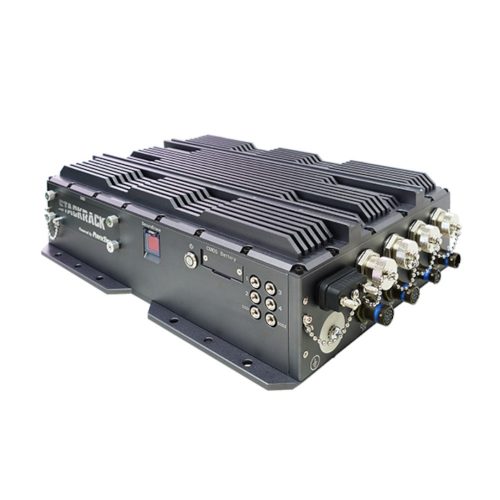F1-30D – PCIe/104 GPGPU Core i7 Rugged Military Airborne Modular Computer
Core i7 Rugged Military Airborne Modular Computer –
Small Form Factor (SFF) with PCIe/104 Architecture GPUCPU Open , Scalable Structure
- Rugged COTS computer with Intel®5th generation Core- i7 processor
- NVIDIA®GPU GT950M/GTX 1050 Ti supports CUDA 684/CUDA 768 independent displays by 4 x DP
- Modular rugged chassis with stackable PCIe/104 I/O card expansion.
- 28V DC MIL-STD-1275/704 Power supply with Voltage transient protections
- Design for reliability under demanding MIL-STD-810G/461F Thermal Shock, Vibration, Humidity/EMI/EMC conditions
- Rugged IP65 aluminum chassis with Amphenol MIL-DTL-38999 connectors or M12 Phoenix Contact
- Operating temperature range : -40°C to +75°C
ATR (Air Transport Rack) is a standard that specifies form fit and function of enclosures designed to protect the main internal system. This military enclosure must meet EMI / EMC requirements to prevent noise interference, provide lightning protection and be isolated from small particle contaminants. So, it can be deployed in unmanned aerial vehicles, fighters, and helicopters. To satisfy diverse conditions, ATR chassis are available in different sizes—1/2, 3/4 and Full ATR sizes. Based on 3/4 ATR size, StackRack launches a new Rugged Airborne Mission Computer F1-30.
As a modular mission computer, F1-30 has mechanical feature for mounting in horizontal orientation, offering open architecture to maximize use of interoperability. For example, together with PCIe104 expansion connectors, F1-30 is able to build a stackable architecture, which can be integrated with PCIe/104 expansion modules depending on customers’need, hence it’s highly configurable to specific requirements. Founded on such an open structure, It is an optimum choice for mission computing, demanding graphics generation applications, and GPU-accelerated data processing.
The purpose of PCIe/104 is to provide a System level Stack-Up Only approach. Specification adopts PCI-Express, Ethernet, SATA, USB as well as LPC, SPI, Field Buses and Common Power Connector to the any stacked architecture.
StackPC Specification defines StackPC, FPE, StackPWR connectors relative position and stacked systems organization common approach. Also specification describes using stack modules in COM applications.
Specification is targeted not only for traditional stackable systems with all boards of the same form factor, but also for other stackable architectures like COM applications (mezzanine Computer-On-Module in conjunction with base board) and SBC expansion (expansion bus for Single Board Computers of various form factors).
PCI Express was chosen because of its performance, scalability and wide market acceptance. Ethernet was chosen as the most popular long distance data interconnect, which is inevitable in modern computer based environments. SATA was chosen as the storage interconnect because of wide acceptance and bandwidth scalability. LPC bus, SPI and other signaling interfaces were chosen because of their capabilities to provide support for legacy devices and to expand host processor functionality in simple and cost effective way.
| Manufacturer |
|---|




